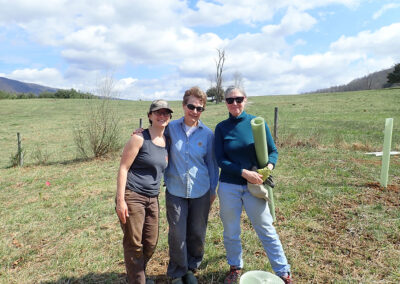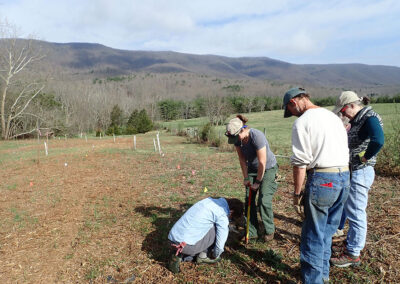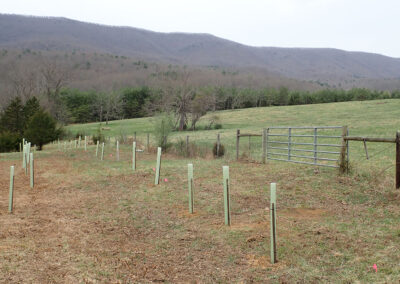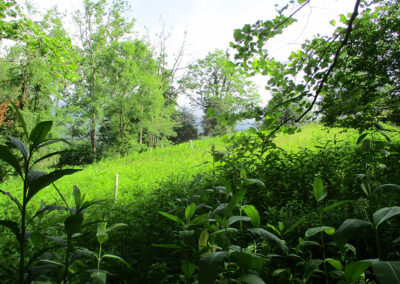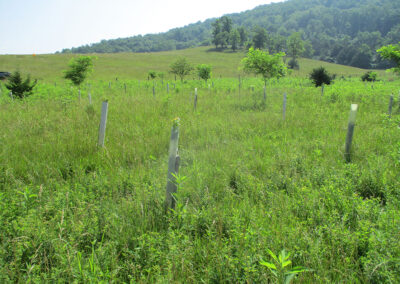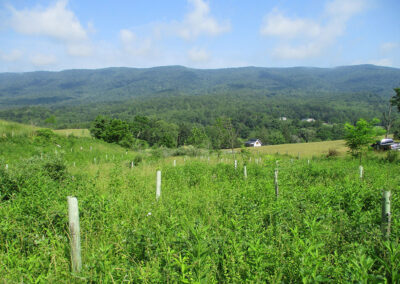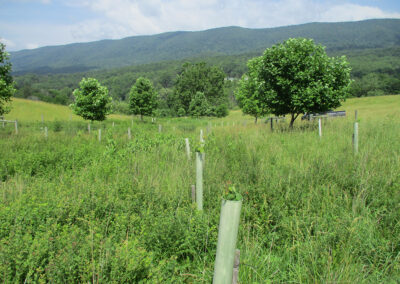Success Stories
Walkers Run Farm
Thanks to Ellen Brock for cinematography
Problem:
A previous owner had grazed too many cattle on the property, with no maintenance or control of invasives.
Solution:
Around nine acres of trees planted to form riparian buffers, removal of invasives, management of cattle grazing
Outcome:
Water features are now protected by a growing canopy of trees and, increasingly, native plants, though there will always be give and take with wildlife competing for food or land.
Reclaiming the land for all
When Joe Borzelleca and his wife Ellen Brock moved onto Walkers Run Farm, 132 acres in Zack, Virginia, the property had been used to graze cattle – sometimes too many for the acreage – for years. A self-proclaimed “city boy,” Borzelleca did not realize the impact that years of overgrazing with no buffer maintenance would have on the land. But as he got to know the land, he could see the damage that was being done.
The property is blessed with plenty of water. It fronts Walker Creek, which runs into the Maury River and then into the Upper James, and there are also three seasonal creeks, a spring that feeds the house, and a vernal pond. All had suffered from erosion caused by overgrazing and too many hooves, and had been overrun by invasive plants. Researching solutions, Borzelleca found the Conservation Reserve Enhancement Program (CREP), administered by the Natural Resources Conservation Service (NRCS). Through CREP, they designed and installed fencing and cattle troughs to manage rotational grazing, started getting rid of invasive plants, and planted around 1,500 trees.
As those tender saplings emerged from their tubes, though, local deer were waiting. “They have been our biggest challenge,” Borzelleca said of the deer, who caused so much damage that several tracts had to be replanted. “The James River Association came through for us, with saplings and man and woman power,” Borzelleca said, “and have continued to support us.” The invasive plants have also been challenging – some can be removed, some require herbicide, and some must be mowed regularly, often a challenging task.
But the plantings have taken hold, and the buffer is protecting both waterways and wildlife. Borzelleca is grateful for the support from his team, saying, “we hope this investment in our lands will serve the human and wildlife populations for decades to come.”
As always we are grateful for all the support you folks are providing in our stewardship of this amazing piece of ground. ~ Joe Borzelleca

Amber Ellis, left and Philippa Belsches doing tree shelter maintenance
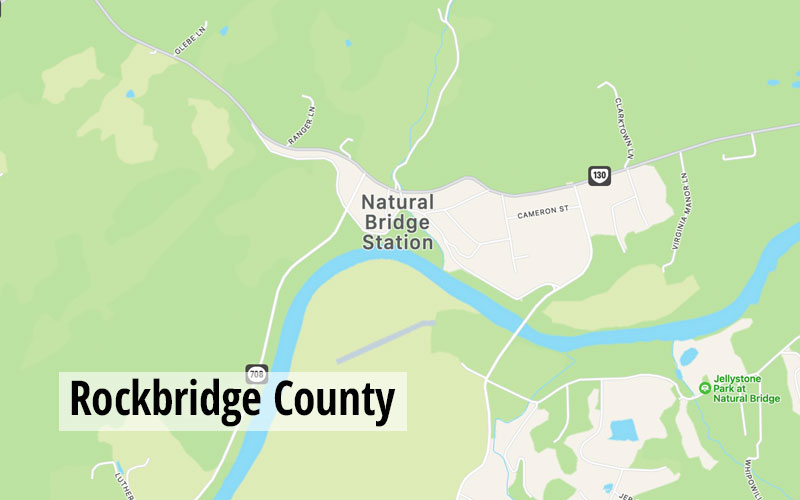
About the Project
Location: Zack, VA, located in Rockbridge County
Year Installed: Initial planting 2009, maintenance planting 2019 and 2023
Land type: Private
Acres of Riparian Forest Buffer: About 9 acres total
Trees planted: About 1,500
Improvements: Riparian forest buffer restoration, removal of invasives, livestock fencing
Programs used: Conservation Reserve Enhancement Program (CREP), James River Buffer Program, James River Stewardship Program
Key Partners: Natural Resources Conservation Service (NRCS), Virginia Department of Forestry, James River Association
Installed by: Owner, contractor, James River Association staff and volunteers, Appalachian Conservation Corps


